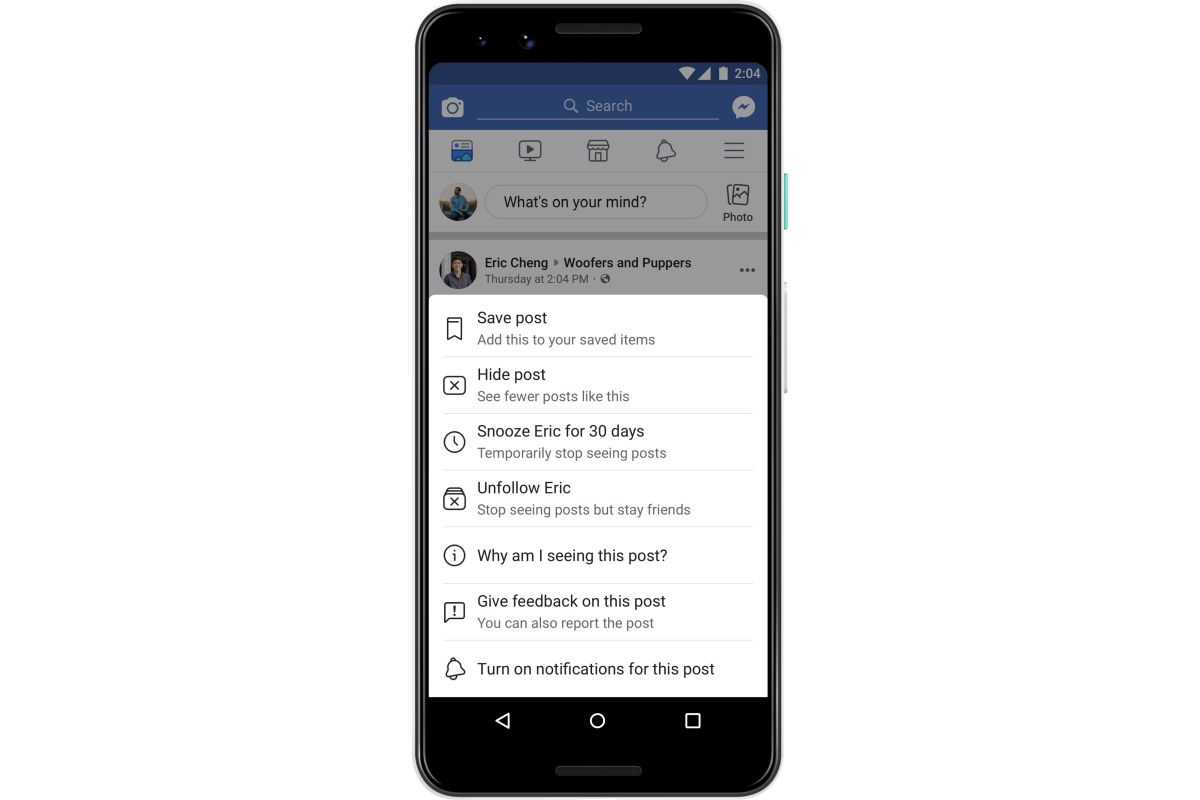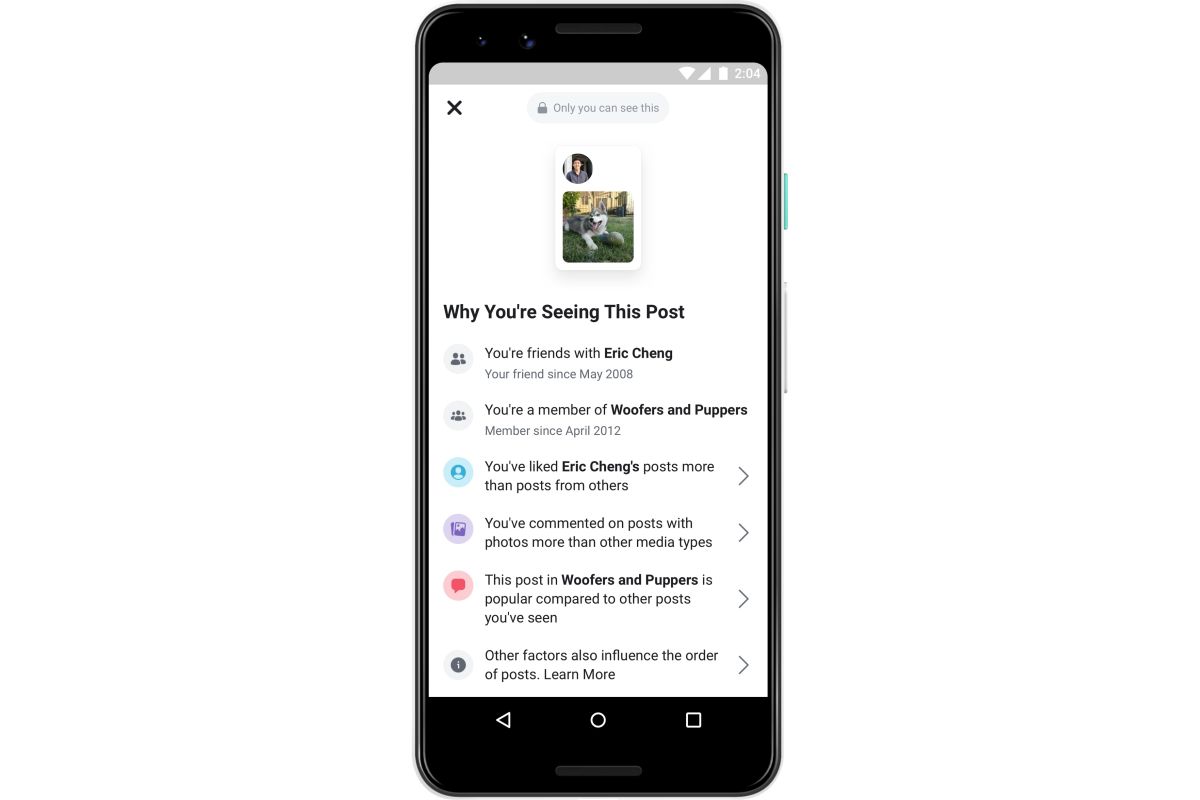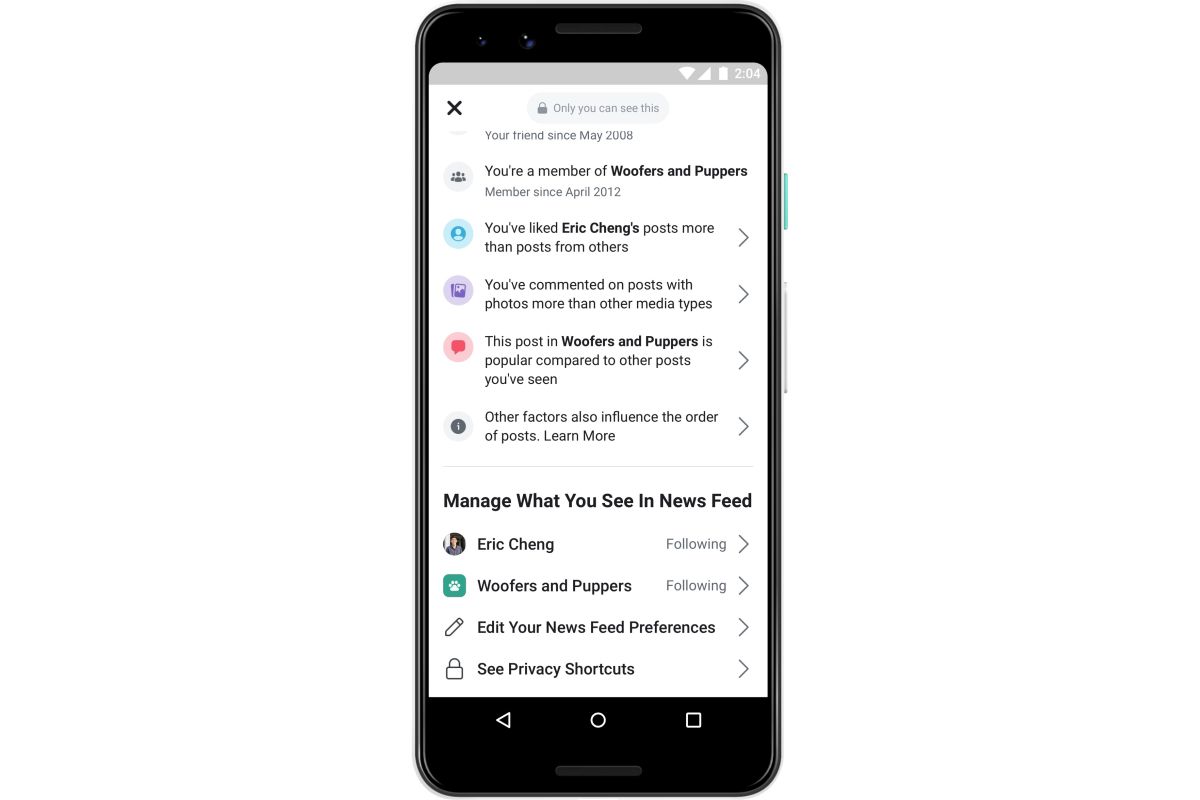Not to be confused with the platform’s already existing “Why Am I Seeing This Ad?” function, the new feature is similar, save for it being catered, designed, and tailored towards Facebook users. Giving them a wider – if not greater – level of control over the type of post that appears on their news feed or personal page. The “Why Am I Seeing This Post” feature works as such; you access it by clicking the ellipsis (the three dots at the top right corner of every post) to open the cascading tiles of options. Upon opening it, you’ll then see the titular option on the list. Tap on it, and the option will then proceed to display the relevant information and connection behind the post in question.
Specifically, the feature will list down the person friend or family member related to the post, plus the group that bears relevant to the content of the post. As an example, if the sponsored post happens to be about tea, hitting the “Why Am I Seeing This Post” option could list down a friend that shares the same passion you have for the beverage, along with a tea-centric group that you joined years ago. It’s not just the people and groups that are listed. The feature will also display your interaction with specific post, such as videos, photos and links. It also lists down the pages and groups related to the post, but liked by other users besides yourself.
This is where the new controls and options come into play. From this page, Facebook users will be able to choose what pages they will See First, and whether they wish to Unfollow a individual, or simply hide a single post that you may deem to be mildly inappropriate or just downright offensive. Additionally, Facebook is also giving users the option to “Snooze” a person, Page, or Group. It’s like the “Unfollow” option, but instead of permanently silencing posts (don’t worry, you’ll still be friends with them), you’re simply taking their posts off your wall for a temporary period.
The “Why Am I Seeing This Post” features will begin rolling out today, with Facebook users in the US getting the feature first. Before gradually rolling out to the rest of Facebook users globally.


